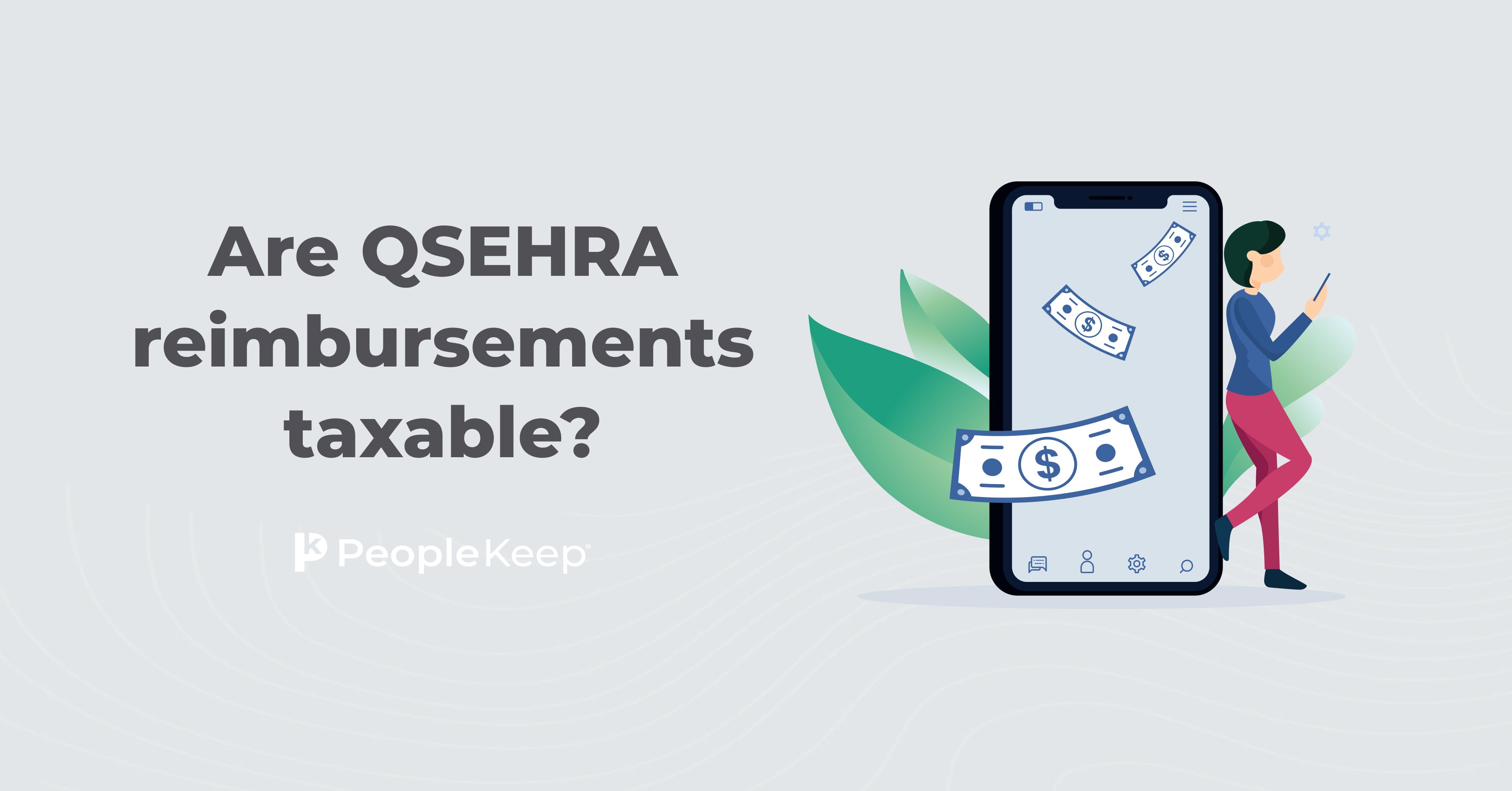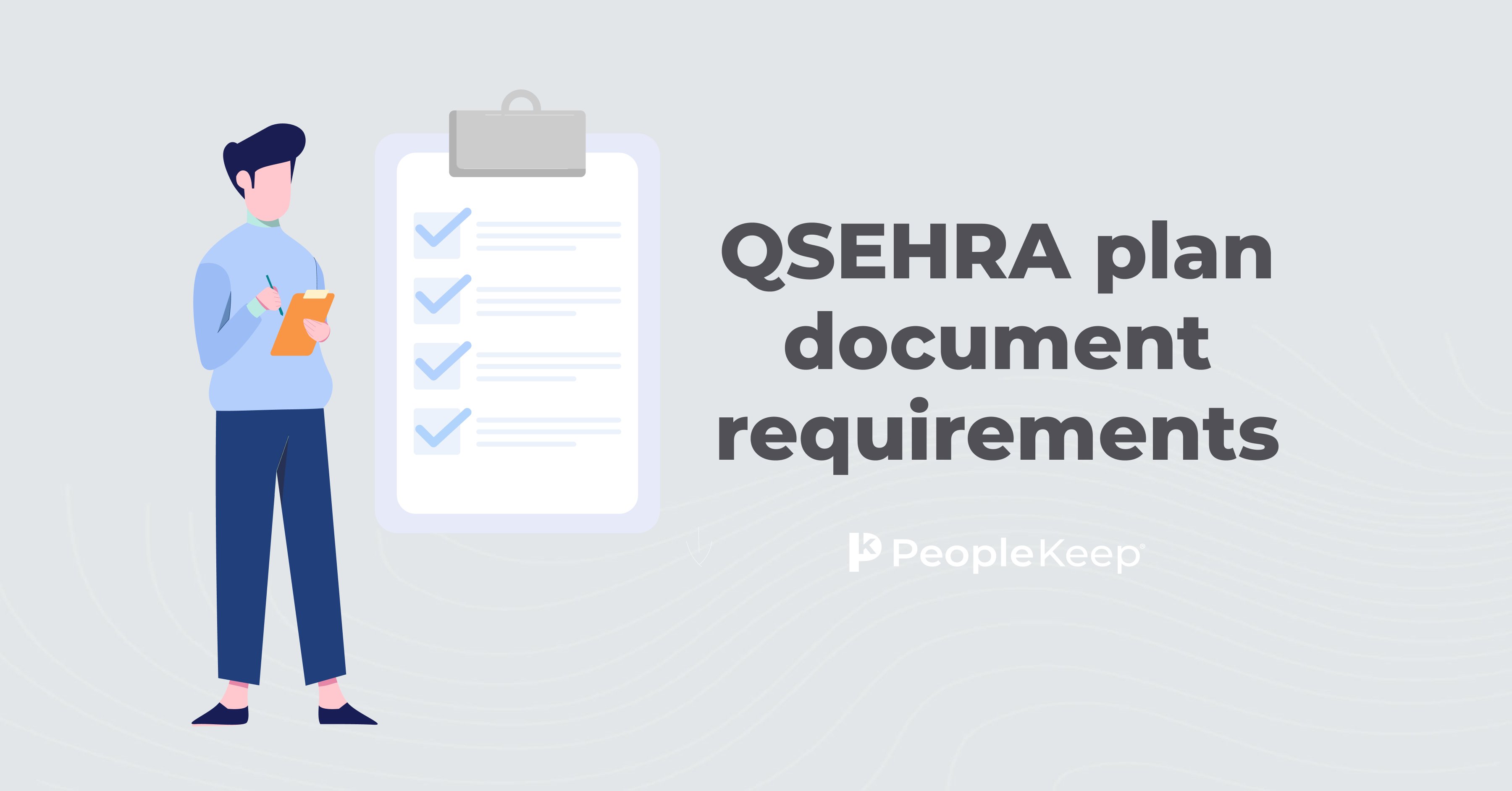W-2 reporting requirements for QSEHRA benefits
By Elizabeth Walker on May 18, 2023 at 10:30 AM
Ever since the 21st Century Cures Act introduced the qualified small employer health reimbursement arrangement (QSEHRA) in 2017, many small employers have had questions about the benefit's taxation.
According to IRS Notice 2017-671, a QSEHRA isn’t considered group health plan coverage, meaning it's not subject to group health plan requirements. But that doesn't mean the small employer HRA is without compliance regulations.
For a QSEHRA to meet the IRS notice rules, employers need to understand how the QSEHRA is taxed and how to report the benefit on their eligible employees' Form W-2s.
In this article, we'll go over basic QSEHRA taxation rules, including QSEHRA W-2 reporting, accounting for a taxable reimbursement, Patient-Centered Outcomes Research Institute (PCORI) fee responsibilities, and what to report if you have another HRA.
While this article contains helpful guidelines for informational purposes, it shouldn't be taken as legal or tax advice. We recommend contacting your certified public accountant or tax professional for additional help during the tax season.
Setting up your first HRA? Get our HRA compliance toolkit for beginner's tips
What are the basic rules surrounding QSEHRA taxation?
The QSEHRA was created as a formal, tax-free benefit for an eligible employer of fewer than 50 full-time equivalent employees (FTEs). In many cases, QSEHRA contributions are tax-deductible for employers. QSEHRA reimbursements for medical expenses are also tax-free for employees in many cases as well.
The taxation of reimbursements for eligible expenses is dependent on what type of health insurance coverage your employee has and whether it’s considered minimum essential coverage (MEC). For example, reimbursements are tax-free to employees who purchased their own policy from the Health Insurance Marketplace. However, if an employee is covered by a spouse's group plan, reimbursements for premiums are taxed, but other expenses are tax-free.
Organizations using an HRA save an average of 27% for single plans and 52% for family coverage2 compared to organizations that only use a group health insurance plan.
In summary, here are the basic QSEHRA taxation rules:
|
For Employees |
For Employers |
|
Free of payroll tax |
Free of payroll tax |
|
Free of income tax if an employee has MEC |
Subject to income tax withholding |
|
Contributions are tax-deductible and are excluded from FICA and FUTA |
How does an employer report a QSEHRA on their employees' W-2s?
A small employer offering health coverage through a QSEHRA must report the benefit on every eligible employee's W-2.
Box 12, code FF is reserved specifically for the QSEHRA benefit. Organizations should report the total allowance the eligible employee was entitled to receive during that calendar year without regard to the number of payments or reimbursements amounts the employee actually received.
The permitted benefit amount should include only newly available QSEHRA funds. Any carryover amounts from previous years shouldn't be included.
Because a QSEHRA can be established at any time during the calendar year, it can have a short initial plan year. If your organization uses a non-calendar-year QSEHRA, you should report a prorated amount of the permitted benefit for the calendar year.
For example, if you offer $200 a month and your QSEHRA plan year begins on June 1, 2023, you would report $1,400 on the employee's 2023 W-2. (That's $200 times seven months of permitted benefit in 2023).
Similarly, if an employee's eligibility or allowance changes during the year, the company should prorate the amount reported on their W-2 to reflect the change.
Here's how that works: Say an employee is eligible for $200 a month as a self-only employee from January 1, 2023, to May 31, 2023, and $400 as a married/family employee from June 1, 2023, to December 31, 2023.
In this case, the employer should report $3,800 on the employee's 2023 W-2. (That's $200 times five months of permitted self-only-status benefit plus $400 times seven months of permitted family-status benefit).
How does an employer account for taxable QSEHRA reimbursements?
Employees who don’t have an insurance policy that meets MEC can still receive reimbursements through their QSEHRA coverage for an expense, but those reimbursements are subject to income tax.
An employer should track employees’ health coverage status throughout the year and report any reimbursements made while the employee didn’t have MEC as taxable income on their W-2.
Specifically, any expense considered a taxable reimbursement should be included as other taxable income in box 1 with their wages, tips, and other compensation.
If you find out an employee doesn’t have proper minimum coverage after filing their W-2, you should provide the employee with a W-2c form3, Corrected Wage and Tax Statement, and file the form with the Social Security Administration (SSA).
These payments won’t affect the amount reported in box 12, code FF.
A small business may offer other taxable reimbursements through their QSEHRA, including over-the-counter drugs purchased without a doctor's note and health insurance premiums paid on a pre-tax basis for a spouse's group health policy.
If this is the case for your small business, you'll report the amounts paid to eligible employees that year as wages subject to tax withholding in box 1.
Like taxable payments for an employee without MEC, these payments won't affect the amount reported in box 12, code FF.
What are an employer's Patient-Centered Outcomes Research Institute (PCORI) fee responsibilities?
Because the QSEHRA is a self-insured health plan, it's subject to the Patient-Centered Outcomes Research Institute (PCORI) fee. This fee helps fund the PCORI's research initiatives.
An employer offering a QSEHRA must report this fee annually on Internal Revenue Service Form 7204. The fee is based on the number of eligible employees a small business has included in the health benefit for that tax year. Fees are due by July 31 of the year following the last day of the plan year.
What are employer reporting requirements for an individual coverage HRA?
The individual coverage HRA (ICHRA) is another affordable coverage option that enables organizations of all sizes to reimburse their employees for individual health insurance premiums and other qualified medical expenses. Like the QSEHRA, all ICHRA reimbursements are free of payroll tax and income tax.
But unlike the QSEHRA, there are no W-2 reporting requirements for the ICHRA. However, you're not totally out of the woods when it comes to individual health insurance coverage.
You'll need to adhere to a few reporting requirements if you offer health coverage through an ICHRA, so check the rules carefully. Otherwise, you may get hit with some pesky fines.
Conclusion
These days, you don't have to work with a health insurance company to offer your employees a quality health benefit. While coverage through a QSEHRA comes with excellent employee benefits, it's essential to maintain compliance with IRS guidelines to maximize your tax advantages and continue reimbursing employees for their health care expenses without penalties.
Facing new reporting and tax-filing requirements for employees' W-2s can be daunting, but it's not impossible. A certified public accountant or tax professional can help you manage this task during the tax season.
This article was originally published on April 2, 2021. It was last updated on May 18, 2023.
1. https://www.irs.gov/pub/irs-drop/n-17-67.pdf
Check out more resources
See these related articles

Are QSEHRA reimbursements taxable?
Confused about the tax implications of QSEHRA reimbursements? Learn whether these reimbursements are subject to taxation in this easy-to-understand guide.

What are my 2019 small business employer health insurance requirements?
Are you feeling confused about how the ACA looks in 2019? Let us help you. Our experts at PeopleKeep fill you in on the modern ACA requirements.

QSEHRA plan document requirements
In this post, we’ll discuss the requirements associated with QSEHRA plan documents and what information those documents should include.


